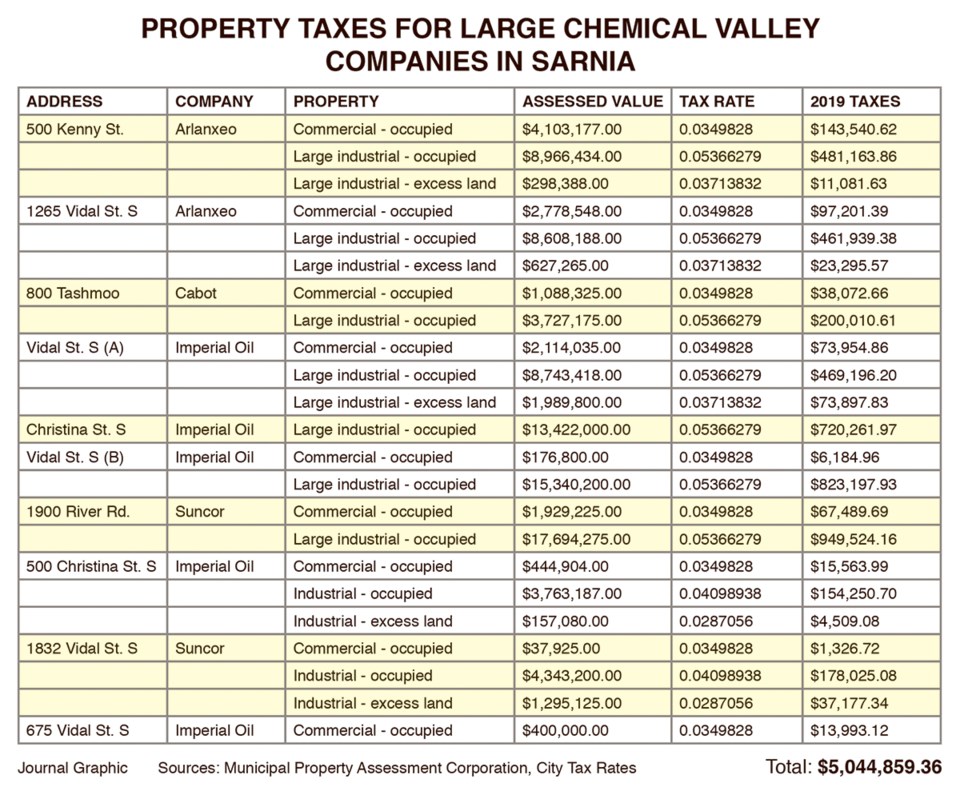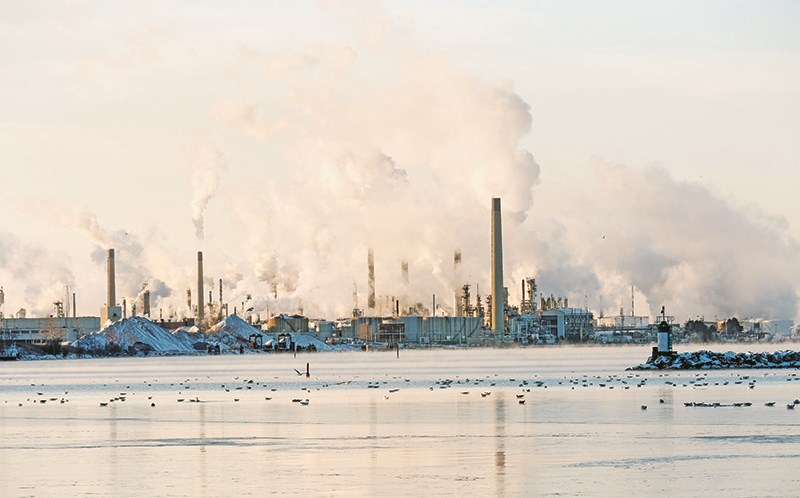Troy Shantz
Sarnia is considering a $1-million special levy on the local petrochemical industry to pay for shared municipal services.
City staff has identified various things provided by city taxpayers that also help the Chemical Valley.
They include emergency warning sirens, fire equipment and staff training, a mobile command bus used in emergencies, and ongoing maintenance of the Donohue Bridge, the twin spans linking the city and South Vidal Street industrial corridor, according to a report by finance director Suzanna Dieleman.
Those assets are valued at $17 million and have an ongoing annual cost to taxpayers.
If council approves the idea during budget deliberations next month, the special levy would be applied annually for 10 years.
Sarnia Mayor Mike Bradley said a tax on industry is a contentious issue that has arisen in the past. Whatever happens, he said, the companies need to be consulted.
“In the scheme of things, the levy is not huge in the industrial sector,” he said. “On the other hand, you want to continue to have a good working relationship.”
St. Clair Township, which is home to much of the Chemical Valley, already has a special levy on industry. The $3.5-million tax over 10 years is used to pay for specialized firefighting equipment.
Petrochemical companies in Sarnia pay property taxes, which is the only direct revenue the city receives. The Journal has calculated the largest companies collectively pay about $5 million a year in taxes (see chart on page 3).
Much of the Sarnia levy, if approved, would help pay for the financial drain of the Donohue Bridge, which has long been plagued by design and engineering problems.
Bradley noted many vehicles using the bridge have no connection to the petrochemical industry. A levy might also affect smaller companies located within the proposed levee boundary, such as fabricators and equipment renters, he said.
“Is it fair to put a special levee on them for a command bus? They’re not the major industries that sometime we have concerns with,” he said.
“There was enough questions raised that I think council will be fairly cautious moving forward on this.”
Coun. Bill Dennis, for one, is strongly opposed. Industry already supports the community through taxes, employee wages and sponsorships, he said.
“If we squeeze too tight these (companies) are eventually going to say, ‘To heck with it.’ It’s happened before,” he said, pointing to the recently announced departure of oil producer Encana Corporation from Calgary to the U.S.
“People can think up all kinds of fancy names. It’s a tax.”
Asked whether residents should continue paying entirely for assets that also benefit industry, Dennis said the focus should be on growing the city’s tax base.
The 2019 property tax estimates in the accompanying graphic were calculated using a list from the Municipal Property Assessment Corporation of 10 large and special purpose properties and the tax rates set by City Hall.

